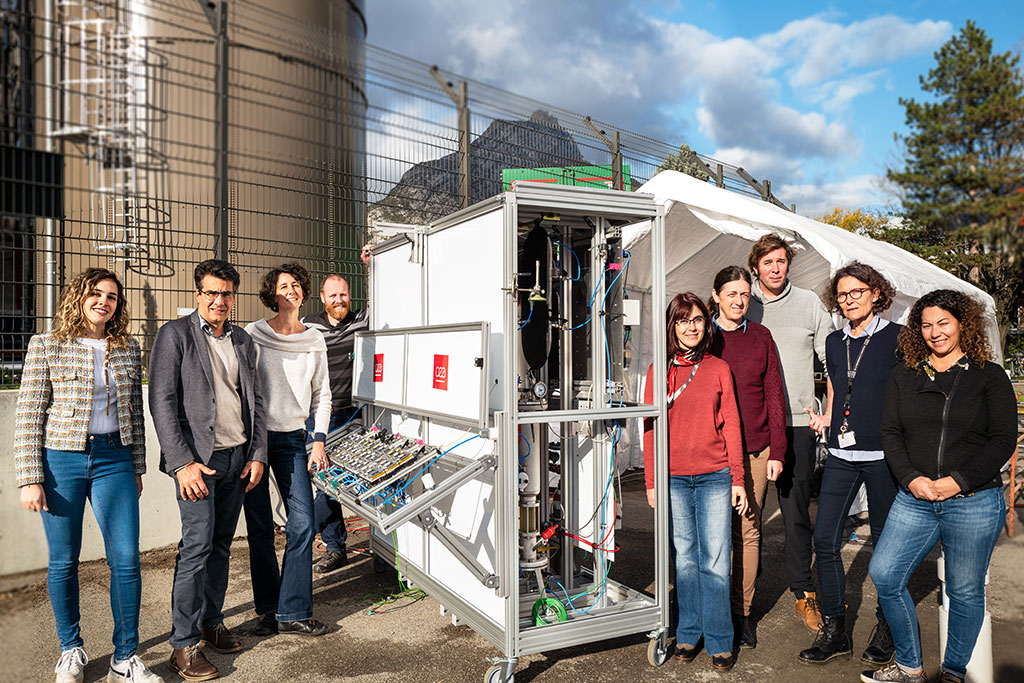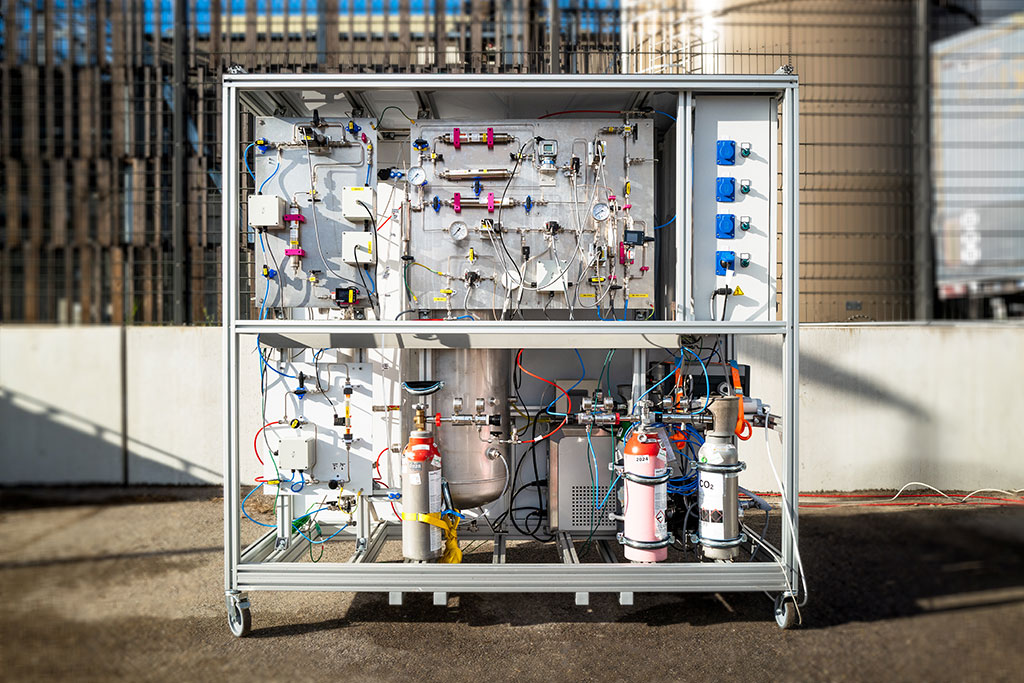If we are to reduce greenhouse gas emissions, solar-powered systems for converting CO2 and water into carbonaceous molecules of interest will be vital. These kinds of solutions could help reduce the use of fossil fuels in hard-to-abate industries incompatible with electrification and hydrogen, such as long-haul heavy transportation, chemicals (basic molecules, polymers), and energy. Although there has been research on the topic, not much of it has reached the functional prototype stage until now. In addition, much of what is in the literature focuses on single components tested on a small scale (generally around a few cm²) and under calibrated laboratory sunlight. The participating CEA teams assembled components from their respective labs to build an end-to-end system from photon collection to the conversion of CO2 into methane. Their prototype was designed to run continuously, without the need for intermediate hydrogen storage, and to offer good intermittency management. It was tested in actual operating conditions for 72 hours, delivering overall efficiency (solar-to-fuel yields) of around 5%. The results were at the state of the art for a demonstrator system with an active photon collection area of this size—a remarkable 342 cm².

The project team in front of the integrated solar-powered methane production system.
Credit A. Aubert /CEA
The prototype tested here was built with integrated photoelectrochemical cells (IPEC) and a methanogenesis bioreactor. The IPECs were made of silicon/perovskite tandem cells with proton exchange membrane electrolyzers. The solar cells create a potential difference at the electrolyzer terminals to produce hydrogen by water electrolysis. A 3D-printed heat exchanger further increases production efficiency. Finally, microorganisms called Archea hydrogenate CO2 at moderate pressure and near-ambient temperature (35 °C) and with excellent selectivity at the second conversion stage.
The demonstrator will be used as an instrumented R&D tool at the CEA. Specifically, the hybridization of components integrated into new complete photon-to-molecule conversion chains will be tested in laboratory conditions.

Back view showing the control panel.
Credit A. Aubert /CEA